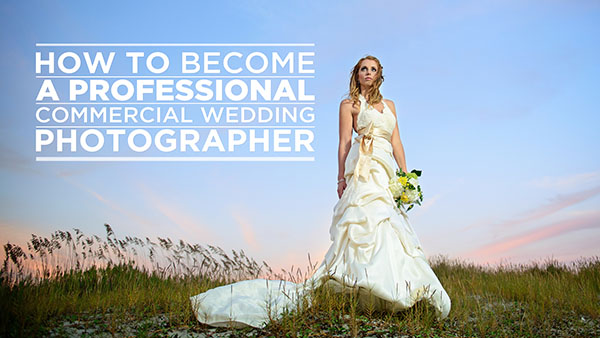Cloudy Weather Can Do What to Colors in a Photograph
Most photographers know that a cloudy or overcast day produces really soft light that can be flattering on the human face. But many of my wedding clients naively say "Oh it's overcast today, the photos will turn out much better!" Overcast light can be a great life saver when you are forced to take photographs in the middle of the day. Typically mid day light is not very flattering because the contrast between the shadows and the highlights is pretty much nuclear. If you don't have natural shade to place your subjects under, then the next best thing is an overcast day to save you from having to battle noon skies. If you were smart (and your client is flexible time wise), you would schedule your shoot during the final hours of the afternoon when the light is more directional and interesting. But what happens when you step outside to find out the beautiful light you've been expecting is dull, overcast, and boring? Here is a simple lighting technique I use all the time to help fake a sunny day and add interesting light to my subjects. This is Victoria and Patrick. They recently got married here in Charleston and unfortunately their wedding day was very close to becoming a monsoon with crazy storm clouds all around and a forecast of 80% chance of thunderstorms. Luckily the rain never hit and we were left with dramatic skies and soft overcast light. This photograph above is a simple one light setup where I exposed for the sky and then lit them from the front for a standard portrait any photographer would think to take. This works well when your couple is out in the open and you are using something bright as the background. You just quickly expose for the ambient sky and balance your strobe to bring up the light on your subject. Simple stuff I know. But what happens if your background isn't brighter than your subject? On overcast days, you can run into some big problems in shaded areas where you have less control over the lighting. Unlike big open areas, shaded areas can get dark quickly when you lose the specular highlights caused by sun-rays shining through leaves and bouncing off buildings. I have found that when I place my subjects in an area with the most flattering light for their faces, sometimes my background becomes way to dark to show up (inverse square law at work). Basically I'm left with a background that looks overcast and often depressing. You can see what I am talking about in the image below. Patrick and Victoria are properly exposed but the light falloff on the background leaves a lot to be desired. If you've watched our tutorial How To Become A Professional Wedding Photographer, you might already know one solution I take to solving this problem. Usually on my wedding, bridal, and engagement shoots (and most general portraits for that matter), I'm only carrying one single light with me. That light might be a strobe, speedlight, or monoblock and it is usually fitted with my favorite light modifier, a small softbox. For a portrait photographer, the most natural instinct would be to use that single light as a key light and place it somewhere in front of their subject. In these overcast situations, however, I've found my light to be much more effective BEHIND my subject. By placing my flash high above my subject and behind them I can add a nice rim or kicker light to my photos that helps add some definition lost by the lack of contrast in my overcast background. Essentially it is like I have gained a second light because I have a HUGE soft box on my subjects (soft overcast sky) and a second rim light behind them created by my flash. Here is a diagram showing the results. Another awesome trick is you can move your kicker light really far behind them so it actually lights up a larger area and emulates sunlight. Since most sunlight would not just land on your subject, by placing your light farther away, you can give the illusion that nice, late day sun is spilling through your entire frame even though we all know it's just a speed light. This is where having a more powerful monoblock comes in handy because you can really crank the power and set the light 20, 40, sometimes 60 feet away and create a nice large spill of light on your background. So next time you are shooting in overcast light and your background is looking dull and uninspiring, try using your flash(es) to light the background instead of your subject. In most cases you will find that the production value of your images will skyrocket from this little trick and it only requires a single speed light. Sometimes Most of the time overcast light is actually pretty boring and removes any and all contrast from your scene. There is a little trick I explain in our Wedding Tutorial that has saved me from producing boring, flat images on a cloudy day, and I think all photographers should have this technique in their bag of tricks.
 Click the image above for more info on How To Become A Professional Commercial Wedding Photographer
Click the image above for more info on How To Become A Professional Commercial Wedding Photographer
Cloudy Weather Can Do What to Colors in a Photograph
Source: https://fstoppers.com/wedding/why-cloudy-days-arent-always-best-your-photographs-2521

0 Response to "Cloudy Weather Can Do What to Colors in a Photograph"
Post a Comment